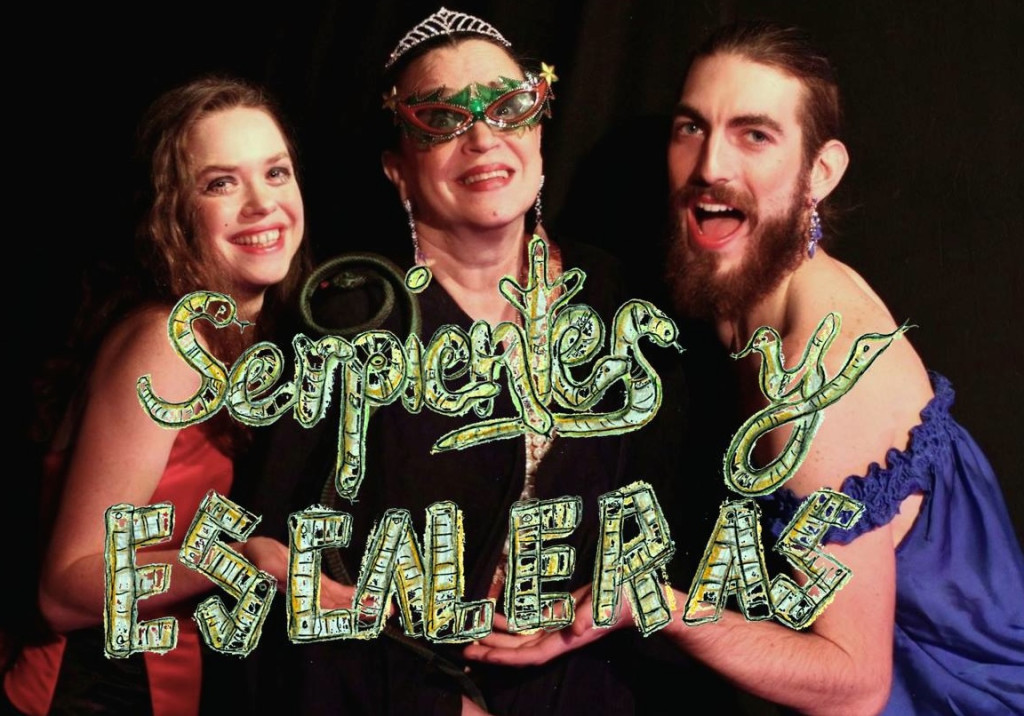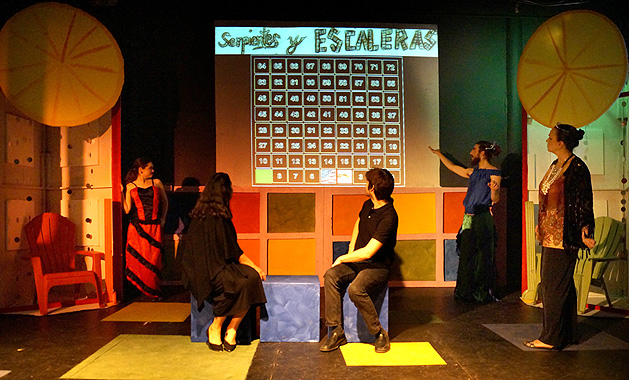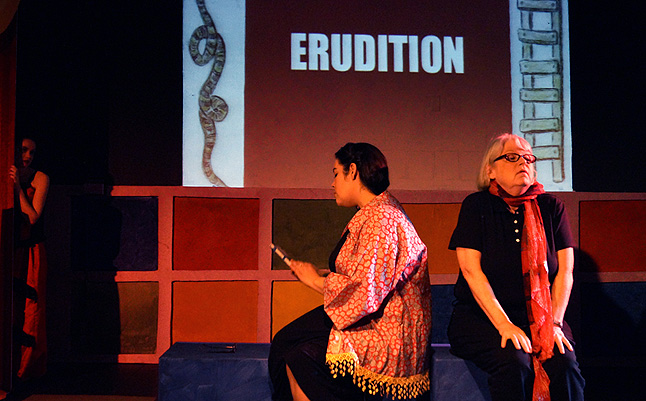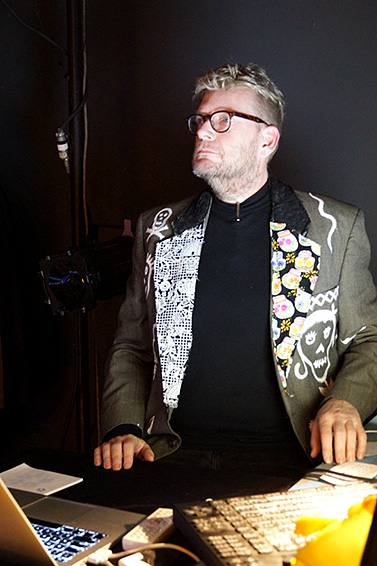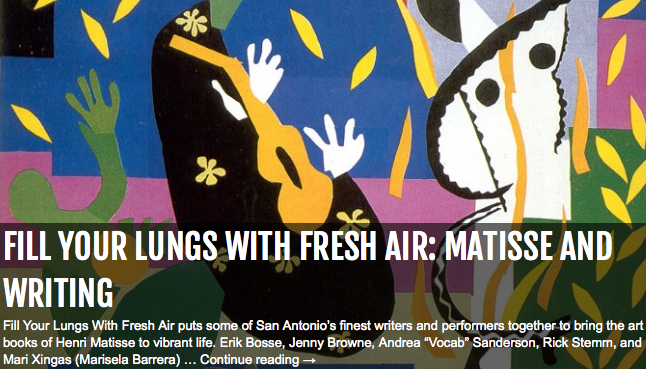
I was commissioned to write a short piece for a collaborative event between Gemini Ink and the San Antonio Museum of Art, to highlight a show of Matisse’s book illustrations. I wrote a short story titled “Saved From the Silverfish.” Here it is:
SAVED FROM THE SILVERFISH
“It’s called Asylum Creek,” said the woman, Irma, who handed me a glass of iced tea. “On account of, you know, the State Hospital just up the road.” Irma turned and nodded at the pale woman with braids who sat on the sofa leafing through a used coloring book.
“Maisie here used to live there, at the State Hospital. Isn’t that right, Maisie?”
“C’est un peu vrai,” Maisie said softly, without looking up.
“Oh, it looks like she’s French, today.” Irma smiled and walked over to adjust Maisie’s braids so that they fell behind her shoulders. Maisie kept her attention focused on her coloring book.
“Well,” Irma said to me with a sigh, “I’ll leave you to it. Don’t mind Maisie. She’s a quiet one.”
I watched a sly smile flit across Maisie’s lips as Irma left. She turned a page and, without looking up, mouthed the words “C’est un peu vrai.”
There was a desk in the corner, and it was clearly set up for me. The gooseneck lamp was turned on, and a large Royal manual typewriter had been pushed aside. I placed my shoulder bag on a folding chair and set my laptop on the desk.
I’m not sure how Irma found my contact information. I’ve been out of the rare books appraisal business for at least five years. But I needed the money, and well, South Presa Street was not too far from home, so I said yes.
I walked up to the bookcases. There were five cases, each with five shelves. If soon became obvious there wasn’t much—the basic reprints of classics, mid-century fiction in book club editions, some later printings of art books. All in all, the sort of books one can find used on the internet for a few dollars each. There was one, however, which stood out. I instantly knew what it was, but I kept combing through the shelves, saving it for last. When I was done, I turned towards the middle bookcase and bent down to the bottom shelf. As I lifted up the large, slim volume, and placed it on the desk beside my computer, I heard Maisie clear her throat.
“Cela n’a pas pris longtemps,” Maisie said, placing her coloring book in her lap. “Nothing of much interest, right?” she continued in English, with a French accent. “Just that one. The obvious one.”
At that moment Irma walked in.
“Don’t let her throw you off,” Irma said, patting Maisie on the head. “Our little girl here grew up in a tiny town outside of Beaumont. She has an east Texas accent thick enough to march an alligator across. Poor child. Grew up in the bayous of Jefferson County, and then off to the San Antonio State Hospital after her daddy died. All the while her momma’s waltzing across Europe, Hawaii, and Cuba.”
I’m sure much of the juicy parts of the family history were left out, but from what I gathered, the mother came into some money and bought this little house to be close to her daughter. One day she moved Maisie out of the hospital and hired Irma to help out. Irma eventually found herself taking care of both mother and daughter. When the mother died, Irma stayed on. They’d been scraping by, barely making the monthly mortgage payments. Nothing much left, just a lot of furniture and kitchen appliances which were purchased back when avocado was a color. And, of course, the library.
Irma explained that she had some errands to take care of, but Maisie would be no trouble. Normally this is when I’d explain that there was really nothing of value, waive my consultation fee, give the names of a few local book dealers who might buy the lot on the cheap—and then, make good my escape. But there was the matter of that lone, slim volume.
I sat down at the desk. As I waited for my laptop to warm up, I saw Irma crossing over Asylum Creek in an old rusty Impala.
The book was a collection of poems by Charles d’Orleans. He was a 15th century French nobleman, the bulk of whose poetry was written as a prisoner of war in England. The book’s value has very little to do with the poetry of the Duke of Orléans. In fact, the selected poems are not even in their original state. The illustrator took it upon himself to rewrite the poetry into a more modern French. The book is notable because of the illustrator, Henri Matisse. Matisse provided 54 color lithographs, as well as some additional illustrations. The edition was limited to 1,200 copies, each signed by Matisse.
I know the book well. I had been working at an auction house in Dallas several years back and had written a description of a copy consigned by an elderly man from Pauls Valley.
Maisie pulled a chair next to mine and sat down. She ran her hand over the cover of the book. This collection of poems is not what everyone would recognize as a proper book. It is what is often referred to as “livre d’artiste,” that is, an artist’s book. The publisher, printer, typesetter, designer, bookbinder, all of them, worked to showcase the work of the artist—the text, often, being quite supplemental. Poèmes de Charles d’Orléans resembles more of an unbound portfolio. The front and back covers are stiff pasteboard, with an illustration on the front. This unattached cover (often referred to as a chemise) was wrapped in the publisher’s original glassine paper. The pages, inside, were loose gatherings, never bound by the publisher. Strictly speaking, it was not a rare book. If all the plates were present, and lacking any notable flaws, it was worth maybe four to six thousand dollars. Not enough for Irma and Maisie to make it through more than a couple of months, was my guess.
“I love this cover illustration,” Maisie said. “It looks like it was done by a child with crayons. I think Irma believes it’s one of my coloring books from when I was a girl.” She placed her hand palm down on the book and looked into my eyes.
“Charles d’Orleans was imprisoned by the English for 25 years. For me it’s been longer. Well, not by the English, you know. The doctors.”
I opened the book. On the preliminary limitation page, I saw Matisse’s familiar signature. The letter “h” followed by a period. And “Matisse” was written out with a long “s” (crossed like an “f”) followed by a short “s.” But there was no printed number to identify this copy between 1 and 1,200. It’s what is called an out-of-series copy. Sometimes these were test copies where the printer was checking the general layout or various types of paper or ink. Often they served as proofs for the scrutiny of publisher or author. But mostly, they were extra copies to be used for any unforeseen contingencies. This copy wasn’t blank, however. Instead of a number, there was a small red heart inked with a broad nib in a hand firmer than that of an 80 year-old Matisse.
“It’s a heart,” Maisie said. “You know, for love.” And she pushed back her chair and left the room. I could hear her rustling around back in the kitchen.
I checked some reference material on my computer to see the proper pagination of the book, with the number of leavers and lithographs and other illustrations, and began the process of collating, making sure that the book was intact and complete. It didn’t take long. All was as it should be. At the back were three envelopes. I love finding things like that. It’s where things can get interesting. Before I could dig deeper, I heard Maisie return.
She wore an apron and set down a chipped Wedgwood platter with celery stalks stuffed with peanut butter and topped with green olives. “I would have brought the jam. But there were ants. So many ants.”
She wiped her hands on the apron, sat back down beside me, and gathered up the envelopes. “There’s a story that goes with these. And I thought you might want a snack.” She waited patiently, leaning in a bit towards me, her eyes wide and expectant. When I finally took a bite of one of the celery sticks, she began.
“Her name was Lilly, short for Lillian. It was 1943 and she was young, traveling alone through France. This was during the second world war. I think she was a spy. Irma says she was just a loose woman. I don’t know why she couldn’t have been both. But she was my mother, so I’ll never know the whole truth. Anyway, this is way before I came into the picture.”
Maisie lifted up one of the envelopes. She removed a crisp sheet of paper folded into thirds. She handed me the envelope and read from the letter. “Mon cher monsieur Tériade….” Maisie looked up. “How’s your French?” I shrugged, and shook my head. “Pity,” she said. “It’s from Fernand Mourlot. He did the lithography for this book. He and my mother were also lovers. It’s all in the letter. You have to read it right. He quotes some of Charles d’Orleans steamier couplets. Anyway, the letter is written to Tériade, who my mother said was a snake. Tériade published this book. He and Mourlot did all sorts of things together. They created Verve magazine. Verve. Hmm. Verve. That’s a sexy word in any language. Here he’s instructing monsieur Tériade to track down my mother and deliver this copy to her, heart and all. The book took a couple of years to get published and Lilly had moved on with her travels.”
Maisie opened the book to a page with a nude woman seated with her knees to her chest and holding her hair back with a hand.
“That’s my mama, Lilly. She would have been 19 when this was done. Here’s another picture of her.” She handed me the larger envelope.
I pulled out the original charcoal drawing of the print in the book. It was signed and dated by Matisse. Maisie tapped the back of the drawing. I turned it over. Even my poor French could translate “ma flour préférée, Lilly” as “my favorite flower, Lilly.” I noticed there was another piece of paper in the envelope. I pulled out a slip of pale blue paper with a one hundred franc note pinned to it. There was a short paragraph in ink on the paper.
“It’s Matisse explaining that he had forgotten to pay Lilly for the sitting. 100 francs? In the ’40s? What a cheapskate!”
Maisie handed me the final envelope. It was thicker than the others. I removed a folded panel of brown butcher paper which had clearly been used to wrap up the book for mailing. It had French stamps, a return address for a M. Tériade, in Paris, and was addressed to Lillian Calhoun, 7300 South Presa Street.
“I don’t know why the book took so long to find mama. I like to think detectives were employed. It arrived in the post while she was living here, running through a small inheritance with cheap wine, palm readers, and therapists. One day she cleaned out a little room in back and moved me out of my prison across the road at the State Hospital into this new prision here, on the creek.”
We heard Irma come in the back door. Maisie took the book and returned to her sofa.
“Not much of interest?” Irma asked, pointing to the wall of books. “I use her mothers cookbooks every now and then.” She looked over at Maisie. “I hope she wasn’t too much of a pest. She’s good one-on-one, but put two people or more in a room with her and she just shuts down. It’s not that hard to imagine. But for some reason, the doctors don’t even have a name for her condition. And all this talk about being in prison….” Irma shot Maisie a look. “Yes, Maisie, I know what you get up to when I’m not around. Anyway, don’t believe a word of it. She comes and goes whenever she wants, but she will never cross that creek.”
Irma sighed and ran a hand over the spines of some books on a shelf. “I was hoping that these would get us some money. I work when I can. And Maisie helps out, too. She cooks at least one meal a day for us. Isn’t that right, Maisie?” And then, quieter, but still loud enough for Maisie to hear. “And it’s awful.”
When Irma had left, I shut down my computer, gathered up my things, and told Maisie that she had a wonderful book and I thanked her for telling me about her mother and Matisse.
“It belongs to me,” Maisie said, holding the book tight against her chest.
“I know,” I said.
“I kept it safe all these years, saved it from the roaches and the silverfish.”
“You’re doing an excellent job of it,” I said. “You really are.” And I placed one of my business cards on the table beside the gooseneck lamp.
Maisie got up and walked over. She picked up the business card and returned it, and then she handed the book to me. I looked at her, but she just lowered her head and shrugged. So I walked into the kitchen to tell Irma that her life had changed. I wrote out a description of the book, the letters, and the original drawing by Matisse. I gave her the phone number of a friend who worked at Christie’s. “Tell him everything I’ve written. Mention my name. He’ll fly out and take it from there. He can call me if he needs to.”
I walked out. Maisie never looked up from the sofa. I got in my car, drove across Asylum Creek, over the railroad tracks, and then I turned left on South Presa Street.
I never did learn what Maisie’s affliction might have been. Certainty something more than just being, well, “French.”
I wonder what ever happened to them.
